Section 28: 20 Years On
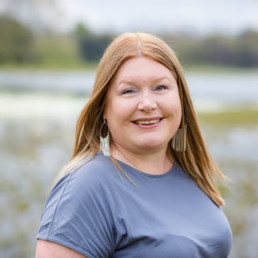
Written by Hannah Wilson
Founder of Diverse Educators
Yesterday marked 20 years since Section 28 was repealed whilst also celebrating Trans Awareness Week. There is a brilliant thread on X here breaking down the key information all educators should know about this piece of problematic legislation which weaponised an identity group.
20 years ago, I had joined the teaching profession as a NQT at a boys’ school in Kent.
Homophobia was an issue.
I cannot remember having any training on my PGCE or in my NQT year about prejudice-based behaviour.
I cannot remember Section 28 being mentioned in either training programmes either.
After a year, I moved to London for a Head of Year role at a boys’ school in Surrey.
Homophobia was an issue.
But I felt more empowered to tackle it and I delivered the ‘Some People Are Gay – Get Over It! assemblies from Stonewall.
After three years, I then moved to a co-ed school in Mitcham.
Homophobia was an issue.
But we had strong whole school behaviour systems and consistent accountability so we tried to keep on top of it.
I also leveraged my pastoral and my curriculum leadership responsibilities to educate and to challenge the attitudes of our students.
After six years, I moved to a co-ed school in Morden as a Senior Leader (still in the same trust).
Homophobia was an issue.
But we had zero tolerance to discrimination and robust behaviour systems in place so we chipped away at it.
Three years later I relocated to Oxfordshire to be a Headteacher of a secondary school and Executive Headteacher of a primary school.
Homophobia was an issue.
But as a Headteacher with a committed SLT and visible role models, we hit it head on.
One of my favourite assembly moments in my twenty years in education was Bennie’s coming out assembly at our school. The courage and vulnerability she embodied as she shared the personal impact of the harmful attitudes, language and behaviour humanised the problem. We braced ourselves for the fallout, for the criticisms, but she was instead enveloped with love and respect by our community instead.
20 years on… six schools later…
Thousands of students… thousands of staff… thousands of parents and carers…
Homophobia was an issue – in every context, in every community, to a lesser or greater extent we have had to tackle prejudice and discrimination directed explicitly at the LGBTQ+ community.
Since leaving headship I have run a PGCE, consulted for national organisations, trained staff in schools, colleges and trusts (in the UK and internationally), coached senior leaders.
I am not a LGBTQ+ trainer – we have experts with lived experience who train on that. I speak about DEI strategy, inclusive cultures, inclusive language, inclusive behaviours and belonging. Yet, in every training session the experience of the LGBQT+ community comes up. It comes up especially with educators who started their careers in schools pre-2003 who talk about the shadow it has cast over them. It comes up with those starting their careers in schools asking when at interview you can ask if it is okay to be out.
Section 28 may have been repealed, we may be 20 years on, but have we really made any progress when it comes to tackling homophobia in our schools, in our communities and in our society?
Homophobia was and still is an issue.
As a cisgender, heterosexual woman homophobia has not personally impacted me. I have never had to hide my sexuality. I have been able to talk openly about who I am in a relationship with. I have not had to navigate assumptions, bias nor prejudice when it comes to who I date, who I love and who I commit to. This is a privilege I am aware of, but that I have also taken for granted.
A ‘big gay assembly’ may have been one of my professional highlights, but one of my personal low points was going on a night out to a gay club in Brighton in my early thirties, and my gay male friend being beaten up in the toilets in a supposed safe space by a homophobic straight man.
This is the reality for a lot of people I care about. Family, friends and colleagues who do not feel safe in our society. Members of my network who often do not feel safe in our schools.
It is our duty to ensure that our schools, our system and our society are safe for people to just be.
To be themselves… to be accepted… to be out at work (should they wish to be)… to be in love… to be able to talk about their relationships and their families…
It is our duty to ensure that we see progress in the next 20 years – as we are seeing a scary global regression of LGBTQ+ rights.
It is our duty to counter the current rhetoric – especially when it comes from our politicians who are weaponizing the LGBQT+ community.
It is our duty to challenge the haters and the trolls – if we as educators do not tackle it, then who else will?
Our gay students, staff, parents and carers need us to be allies. They need us to stand up, to speak out and to say this is not okay, this is enough.
Some signposting for organisations and resources to support you and your school:
Partnerships:
- Schools Out UK – they run LGBT History month and we collaborate on activities.
- Educate and Celebrate – they ran our LGBTQ+ training and school award for us.
- LGBTed – we hosted their launch at our very first #DiverseEd event.
- No Outsiders – we collaborate with them and celebrate their work.
- Pride and Progress – we partner with them and support their work.
- Just Like Us – we collaborate with them and amplify their Inclusion Week.
- Diversity Role Models – we collaborate with them and amplify their great resources.
- There are lots of other brilliant organisations and individuals working this space listed in our DEI Directory here.
Communities:
- ASCL – LGBTQ+ Leaders Network
- NAHT – LGBTQ+ Network
- NEU – LGBTQ+ Inclusion
- Pride and Progress – have an active P&P group in the #DiverseEd Mighty Network.
Books:
- Paul Baker – Outrageous
- Jo Brassington and Adam Brett – Pride and Progress
- Shaun Dellenty – Celebrating Difference
- Catherine Lee – Pretended
- Daniel Tomlinson-Gray – Big Gay Adventures
Podcasts:
Blogs:
- Amy Ashenden – Faith as a Barrier
- David Church – Take Back the Narrative
- David Lowbridge-Ellis – Keep Chipping Away
- David Weston – Pride Matters
- Dominic Arnall – Primary School Storytime
- Dominic Arnall – Section 28 is Still Hanging Over Us
- Gerlinde Achenback – Age Appropriate
- Ian Timbrell – Fight Against RSE
- Jared Cawley – My Wellbeing
- Katherine Fowler – Audit Your Curriculum
- Peter Fullagar – Don’t Look Back
- Rob Ward – Parents Support It and Students Want It
- STEP Study – Improving Support
- Vicki Merrick – Increasingly Visible
Resources:
- Bethan Hughes and Holly Parker-Guest – LGBT+ Inclusion toolkit
- David Lowbridge-Ellis – The Queer Knowledge Organiser
Training:
'Teaching Transgender Awareness Using No Outsiders' - new film resource for schools
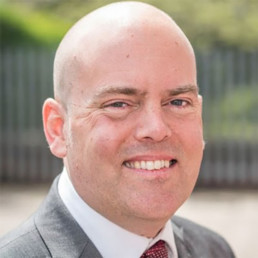
Written by Andrew Moffat
Andrew Moffat has been teaching for 25 years and is currently PD Lead at Excelsior MAT. He is the author of “No Outsiders in our school: Teaching the Equality Act in Primary Schools” and “No Outsiders: everyone different, everyone welcome”. In 2017 Andrew was awarded a MBE for services to equality and diversity in education and in 2019 he was listed as a top ten finalist in the Varkey Foundation Global Teacher Prize.
This week is Transgender Awareness Week which is a great opportunity to launch our new film, “Teaching Transgender Awareness using No Outsiders. The film shows that there are trans children in our schools today and many of those schools are doing an excellent job keeping them safe.
The Keeping Children Safe In Education guidance (Gov.UK, 2023) sets out expectations for schools to safeguard LGBT children;
“Risks can be compounded where children who are LGBT lack a trusted adult with whom they can be open. It is therefore vital that staff endeavour to reduce the additional barriers faced and provide a safe space for them to speak out or share their concerns with members of staff.” (para 204)
Schools in England and Wales are currently waiting for DfE guidance on gender and gender identity. In July 2023, The Times reported that proposed gender guidance had been pulled;
“A Whitehall source said that No10 and Badenoch had out forward a series of proposals to strengthen the guidance to the attorney general and government lawyers. The strongest – and a reflection of the governments concerns – was a blanket ban on social transitioning.” (Swinford, 2023)
The article quoted a government source saying:
“More information is needed about the long term implications of allowing a child to live as though they are the opposite gender and the impact that may have on other children too.” (Swinford, 2023)
The aim of this new film from No Outsiders is to show that schools are already working successfully with trans children and their parents. Schools are delivering age-appropriate lessons where children demonstrate knowledge and understanding and are taught about non-judgement, respect and acceptance of others.
My aim was to make a gentle film to take the heat out of the debate. In the film, we see Sam, a trans man living in Birmingham, return to his primary school to meet his former Y6 teacher. Sam sits in the seat where he sat as an 11 year old, and they discuss how his life has changed since then. His teacher describes how the school has moved on to reflect equality and inclusion today. Sam watches and comments on footage of a No Outsiders lesson at a school in Hertfordshire where transgender awareness is taught, and we hear Year 6 children speak eloquently on the subject. The film shows two parents (one is Sam’s Dad) talking about their experiences bringing up a trans child and the huge support they received from their respective schools. We also see Year 6 children in Bristol discuss texts used in their lessons and respond to the question, “Are you too young to know about this?”
I really wanted to show in this film that parents are working with schools, schools are listening, teachers are working hard to get it right. There is nothing scary or unusual about this. As teachers, we are good at putting the best interests of the children we teach at the heart of our policy and practice. My message to the DfE is, please let us get on with it. Schools want to get this right; we want to work with parents and children to create an environment where every child knows they belong.”
So, what now? What to do with the film? My first thought was to put a link on X (formerly twitter) and the No Outsiders facebook page, but I am aware of the toxic debate around this subject currently and I want to protect all the children and adults in the film. Of course, I realise once it is up on youtube, I lose control of who watches and where it goes, and in the coming months it may well pick up negative responses. but I feel in the first few weeks at least, for the first few views I would like allies to be seeing it. So, I immediately thought of Diverse Educators; a place where educators meet and support each other to make the world a better place. This should be the early audience for the film. Please feel free to share with friends and colleagues, show in staff meetings and use as a stimulus for discussion. I want people to see it. I hope people find it useful.
Watch the film here and feel free to share as you wish. https://www.youtube.com/watch?v=CIH7I_SEU0E&t=3s
What is No Outsiders?
The ‘No Outsiders’ programme was created in order to build an ethos of community cohesion and respect for difference. It has had a positive impact on schools, teachers, children, and communities and has received widespread commendation within the education sector. In 2017, CEO Andrew Moffat was awarded an MBE medal by The Queen (UK) for equality and diversity work in education. In 2019 he was a top 10 finalist in the Varkey Foundation Global Teacher Prize: a $1million award for outstanding contributions to the profession.
Teacher training related to the ‘No Outsiders’ programme has had widespread recognition. In the year 2023 January – November, Andrew Moffat has delivered No Outsiders training in 85 schools across the UK, and at numerous conferences and events, teaching over 35,000 children a No Outsiders lesson and training over 11,000 staff.
The No Outsiders guide “No Outsiders: everyone different, everyone welcome” is available here https://www.amazon.co.uk/s?k=andrew+moffat&crid=3OT7CA7JHVOS2&sprefix=%2Caps%2C308&ref=nb_sb_ss_recent_1_0_recent
A new No Outsiders scheme will be published April 2024.
Belonging
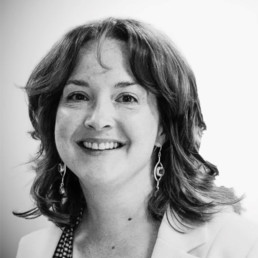
Written by Erin Skelton
Erin is first and foremost an educator and her extensive experience includes a diverse range of roles, encompassing both pastoral and academic leadership positions, across both independent and state education settings. Prior to joining Bright Field, Erin’s most recent role was as Assistant Head and Head of Sixth Form in a top independent girls' school. In this role, she nurtured her students, instilled a sense of purpose and provided invaluable mentoring to prepare them for life as a woman in the 21st century and beyond.
I love language; the way it moves, the way you can craft sound and build momentum. I love the way words allow us to weave descriptors, myths and stories. I love the might of prose when used to overcome injustice or to fight for a necessary cause.
And yet, we use words and acronyms every day to paraphrase and define. We use them to order and sequence and categorise, we use them for labels and for ease. Teaching is filled with them, definitions and categories, the DfE, POLAR4, ALIS, MIDYS, SEND, ISI, OFSTED are but a few. Society looks to educators, as those with the glossary for this educational terminology, to correctly apply it. But what happens when we can’t? What happens when there isn’t a common understanding or a shared approach?
We then use confirmation bias to confirm what we believe to be true. Confirmation bias is the tendency to search for, interpret, favor, and recall information in a way that confirms or supports prior beliefs or values. People display this bias when they select information that supports their views, ignoring contrary information, or when they interpret ambiguous evidence as supporting their existing attitudes.
Our social systems have taught us to think of people in groups, students as cohorts and so we group them together. As educators, we define and label and use our glossary of terms to ensure that we can best support each group. Yet the danger in this is we lose our ability to speak of individuals, to speak beyond labels, we lose our ability to respond to the needs of individual children or we sacrifice the one for the many. Sometimes we choose one overarching characteristic and this becomes the defining one.
When we look demographically at UK teachers, the statistics are telling. In 2021, 85% of UK teachers were from White British backgrounds, as were 92.5% of Headteachers. 75.5% of UK teachers were women. And in a 2022 study for UCAS, 59% of 18-year-olds surveyed felt that they were unable to enter the teaching profession due to the educational or financial constraints placed upon them because of their socio-economic background. Armed with this data, I would question how a teacher’s personal experiences affect how they approach their students and where their unconscious biases or lack of lived experiences come into play.
Psychologists report that it takes one tenth of a second to judge a person and form a first impression, and as we know we will use sensory evidence to form this opinion. As I stand in a classroom or sit in the staffroom, people will form some opinions about me; how others interact with me, how I am dressed, the colour of my skin, my body language and my accent will all form an impression in their mind. They might make assumptions based on them. They could have possibly characterised me and might use confirmation bias to align their assumptions with their observations.
For a moment, imagine that I am a student and you are my teacher…
Can you place my accent? Would it be rude to ask me where I am from? How might I feel if you were incorrect in your assumption? How might knowing this information help you to teach me? Most people would define my ethnicity as Caucasian; Am I White English? Irish? Welsh? Would you define me as British? What if I don’t fit any of those definitions in their entirety? What stereotypes might be applied to me? And how might I feel when I am forced to prove my nationality or ethnic background? My level of English?
And what about when your unconscious biases don’t align with the boxes I might tick for myself, when your perception of me changes based on categorisation? I loathe census surveys, because I don’t fit in the neat little tick boxes. My attempts are always a best fit based on the categories I am given. I am not unusual in this, and I know that my level of privilege is higher than most of my students. I am keenly conscious that your perception of me might change based on the boxes I felt forced to tick. And so, if you were my teacher, would my sexual orientation, medical history, my accent, my political views, my socio-economic background or my educational history change how you might view me?
What if fear of being pitied or treated differently prevented me from showing up authentically? How might this make me feel? And would you view me differently if I hid the ways I might identify myself to you? What if I told you that my accent has often been mocked, my pronunciation corrected? That I have experienced religious, gender-based or sexual discrimination or that there are memes and stereotypes associated with how I might define myself culturally and that these things have prevented me from showing up authentically?
What happens when the boxes you tick for me shame me? Or provide me with a narrative I can’t or won’t identify with? Would knowing my Adverse Childhood Experiences Score make a difference in how you view me?
What if that narrative doesn’t allow me to celebrate or struggle with the richness or nuances of my culture, my traditions or my personal journey? The complexity of my ethnic background, my nationality, my culture, religion, my lived personal journey won’t fit into a neatly labeled box or definition.
What if assumptions and stereotypes are written about me because of which boxes you have placed me in. What if your aspirations for me are not aspirational enough? What if I have equality in your system but no equity?
And what if I go through life either not meeting anyone who I can identify with or who can be my role model? How does that impact how I see myself and the wider world? What if I cannot succeed in a system that doesn’t see me?
A person’s sense of belonging from childhood underpins the entirety of their journey. Belonging relies on being seen and heard, having appropriate representation and being encouraged to be your authentic self without fear of judgment.
Belonging is not trying to fit within a cohort or box, it is not having to develop resilience or grit to work twice as hard as everyone around you. Belonging is not having to work around a lack of resources or support. Belonging is not denying parts of yourself; becoming self-deprecating, being useful, funny or stepping into another role when you walk into the classroom. Belonging isn’t having to hide or opposingly, becoming the stereotype that people characterise you as because that has been the role that has been confirmed for you by their lived experiences or biases.
I wasn’t ever going to be able to write about this topic using quantitative data. I believe that the quantitative data that is used in education to categorise children is fundamentally part of the problem. My research was qualitative because children aren’t statistics, they shouldn’t be defined by the percentage of A*-C, Midys, ALIS, Progress 8, Polar 4 quintile, or their ACES scores. The grade written on a JCQ printout on Results’ Day should include a narrative of each child’s individuality and not a sanitised numeric score.
My data is qualitative….
It’s the story of Jacob, the only boy of a White and Black Caribbean background, growing up in a majority white town, in a majority white school in a white household. Jacob who was constantly in trouble because he wanted to wear his hair natural and who could never walk through the corridors without someone wanting to touch his hair. Jacob who tried to fit the narrative that people gave him and was constantly breaking school rules. Jacob, who didn’t feel a sense of belonging and although he was one of the brightest students I have ever met, people’s aspirations of him were not high enough.
It’s the story of Katerina, the only English Traveller girl in a leafy-lane, middle class school. Katerina, whose parents didn’t have GCSEs, Katerina who was often kept off school to look after younger children. Katerina was discouraged from revising and was torn between embracing the cultural expectations of her and wanting desperately to be the first person in her family to achieve GCSEs. Katerina, who would often misbehave towards the end of the week to land herself in detention which would enable her to revise. Katerina who spoke with an accent and dialect that was unique to her culture but who was constantly corrected at school.
There is no easy fix for this issue. It requires teachers to be self-reflective practitioners, to challenge assumptions, to think beyond the framework that Ofsted, ISI and national league tables provide. It requires us to be vulnerable, to be still and listen, to acknowledge that we are the sum total of our experiences and that we are not the oracles just because we are the ones standing at the front of the class. It requires empathy, allyship and advocacy, to not accept the status quo and to acknowledge our own and others’ privilege.
In the spirit of vulnerability, I am a woman who struggles with boxes. There is no box to put me in and I am keenly aware that on the whole, my intersections are fairly normative. And so, I challenge you to share yourself, to encourage, to correct with empathy, to challenge misconceptions and accept how people individually define themselves, even if it doesn’t fit into a neat set of boxes or it challenges your experience, your perception or the norms of your organisation or society. Once upon a time, every adult was a child, a child whose sense of belonging, underpins the entirety of their journey, a child, and this journey starts in school, where every child should matter.
Empowering Through Education: The Rastafarian Scheme of Work

Written by Johnoi Josephs
Johnoi Josephs is the Associate Assistant Principal at a school in West London where he specialises in Behaviour, Attendance and Pastoral Programmes. He also teaches RE, Citizenship and Sociology. As well as teaching he is the co-founder of Black Men Teach which aims to build a space where Black Males and Boys can thrive in education. For him, BMT is important because representation matters in all sense and so we need to illustrate presence in every industry/profession. Johnoi aims to live a life of servitude where he is able to make as much impact as possible when it comes to education.
In the pursuit of a more inclusive and culturally diverse education system, it’s essential to recognise the power of representation. As a black male teacher from Jamaica, my journey in creating the Rastafarian Scheme of Work was fuelled by a desire to pay homage to my roots and provide students with a curriculum that embraces their own cultural identities. This endeavour was not only a personal passion, but a fundamental step towards decolonising the curriculum.
The Inspiration
The spark for this project ignited during a conversation with a friend. We delved into the complexities of decolonising the curriculum, particularly within Religious Studies. It was clear that this endeavour required a nuanced approach. Armed with this newfound determination, I set out to create a curriculum that would bridge the gap between mainstream education and the rich tapestry of Rastafarianism.
A Journey of Dedication
Crafting the Rastafarian Scheme of Work was no small feat. Balancing it with my other responsibilities was a challenge, but I knew this endeavour was a crucial step towards a more inclusive educational experience. I dedicated days of my summer holidays to ensure that this curriculum would be comprehensive, engaging, and transformative for students.
Empowering Through Knowledge
The Rastafarian Scheme of Work is a meticulously designed curriculum that empowers KS3 students with deep understanding of Rastafarianism. This comprehensive course comprises:
- Seven Detailed Lessons: Each lesson is designed to provide students with a holistic view of Rastafarianism, encompassing its origins, beliefs, practices, and cultural significance.
- Medium Term Plan (MTP) Breakdown: This plan outlines the progression of the curriculum, ensuring a seamless and immersive learning experience.
- Knowledge Organiser: A valuable resource that condenses essential information, allowing students to review and reinforce their understanding.
- Assessment: A tool to evaluate students’ grasp of the material, providing valuable feedback for both educators and learners.
- Extra Resources: Supplementary materials enrich the learning journey, offering a well-rounded exploration of Rastafarianism.
The Power of Representation
Incorporating diverse perspectives and cultural awareness in education is not merely a matter of political correctness, but a fundamental necessity for the holistic development of students. Research consistently demonstrates the profound impact of representation on learning outcomes, social integration, and well-being.
- Enhancing Learning Outcomes: Inclusive curricula positively affect student motivation and achievement levels, leading to higher academic performance.
- Fostering Inclusivity and Belonging: Representation in education helps foster a sense of inclusivity and belonging, leading to increased participation, improved social integration, and a stronger sense of community within the school.
- Cultivating Empathy and Global Awareness: Exposure to diverse perspectives cultivates empathy and a broader understanding of the world, a critical skill in an increasingly interconnected and globalised society.
- Mitigating Stereotypes and Biases: Inclusive education challenges harmful stereotypes and biases, fostering a more accurate and nuanced understanding of different cultures and identities.
Transforming Schools: A Call to Action
Given the wealth of research supporting the importance of representation and cultural awareness in education, educators must take proactive steps towards decolonising the curriculum. The Rastafarian Scheme of Work is a prime example of how a curriculum rooted in cultural authenticity can drive positive learning outcomes and empower students to embrace their identities.
By embracing diverse perspectives, we not only enrich the educational experience, but also prepare students to navigate an increasingly diverse and interconnected world. Through inclusive education, we can truly empower the next generation to become compassionate, culturally aware global citizens.
Incorporating the Rastafarian Scheme of Work into your curriculum is a significant step towards creating an environment where every student from certain backgrounds can feel valued, seen, and heard. Together, we can work towards a more inclusive and equitable education system that prepares students for a future marked by understanding, empathy, and respect.
Trans People are Loved: Diverse Educators in Allyship
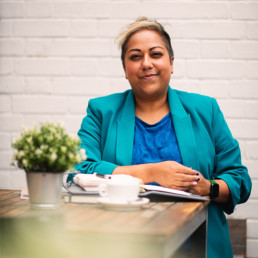
Written by Bennie Kara
Co-Founder of Diverse Educators
When a community comes together, beautiful things can happen. Here at Diverse Educators, we have witnessed the rise of transphobic narratives nationally and internationally and have felt, as many others do, an acute sense of helplessness about how to be active allies for the trans and non-binary people we know and love.
When we were approached by a member of the non-binary community in despair at hearing and experiencing such a wave of transphobia and gender critical rhetoric, we gathered associates and friends to discuss how we could do something, anything, to raise our voices and show that we could be ‘together-strong’. In time, this shaped into an evening solidarity event to take place virtually. We wanted to bring people together to signal, even in the smallest ways, that there is work to be done in protecting those who are increasingly marginalised in our society.
It was clear from the outset that we did not want to just focus on how difficult the social environment is for trans and non-binary people. We wanted, collectively, to use our voices to highlight both the reality for trans and non-binary people and the green shoots that we can see around us.
Our speakers were wonderful. Jo Brassington (they/them), a Diverse Educators Associate, outlined the legal aspects of trans and non-binary identities in schools. The wealth of comments and questions after their section showed that there is a real need for educators to have access to training on how to support and protect their trans and non-binary young people and colleagues. Hannah Jepson, (she/they) a business psychologist and expert in workplace inclusion, followed with a precis that highlighted the work of the corporate world in supporting trans and non-binary people at work. There were some enlightening comments in response showcasing best practice in the workplace. Finally, George White (he/him), a trans teacher and independent consultant/trainer on transgender identities and the Catholic faith, outlined the green shoots in how Catholicism is shifting the established narrative on trans and non-binary people.
Hannah Wilson, the speakers and I left the solidarity event feeling heartened that over 60 people had given their time to attend the event, with feedback that indicated a real need for follow up. While we knew that we wouldn’t be able to find distinct ways forward immediately, the networking and signposting that took place was useful in forging connections so that action can be possible in the future.
What we do in miniature creates ripples that, in turn, can create waves. This event served to show how much there is to do still in support of the trans and non-binary community, and each attendee was asked to pledge, if possible, what their next steps were using the hashtag #TransPeopleAreLoved. The pledges appeared like pebbles in the pond.
This is allyship.
Proud 2 b Me!!
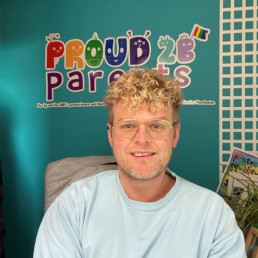
Written by Matt Taylor-Roberts
Matt Taylor-Robert (He/Him) is the Founder and Managing Director of Proud 2 b Parents and with his husband, Matt is an adoptive parent to their amazing son. He feels privileged to work for a regional adoption agency as an independent panel member and has previously worked for an independent foster agency within the same role. However, he had to step away from this role due to becoming a foster carer for this agency. Matt has previously worked within Children's Services for a local authority. To find out more about Proud 2 b Parents please head over www.proud2bparents.co.uk.
As a proud parent of a young person attending Proud 2 b Me, the UK’s only youth group specifically for children with LGBT+ parents or carers, I am constantly amazed at the benefits of this service and why there isn’t more like it across the UK.
Proud 2 b Me provides a safe space for young people aged eight and above to engage in various fun activities, such as kayaking, ice skating, and pizza making. However, the true essence of this youth group lies in allowing for discussions, offering support, and encouraging young people to navigate their unique family structures and be open about their identities.
Proud 2 b Me acts as a safe place where children 8 years and up can openly discuss their family structures and experiences, allowing them to explore and understand their own thoughts and feelings. The group sessions facilitate meaningful conversations about topics like handling prejudice, telling others about their family (‘coming out’), and embracing individuality. Witnessing my child interact with their peers, hearing their stories, and exchanging insights has been an incredible journey of self-discovery for them. The support received from like-minded individuals who face similar challenges has been invaluable.
Having inclusive spaces that celebrate diversity in all its forms is essential for children to grow and thrive, as well as meeting others from various backgrounds and family dynamics, the youth group encourages acceptance and develops a sense of belonging. By engaging in activities like kayaking, placard making and ice skating young people can develop friendships that extend beyond their family situations. They learn to appreciate differences, respect one another’s experiences, and build a strong support network that can be relied upon in times of need.
Coming out about one’s family structure can be a sensitive and complex process for some young people. Proud 2 b Me offers a supportive environment where individuals can openly discuss their feelings and experiences. The group provides guidance on how to approach conversations about their family structure with friends, classmates, and teachers, equipping them with the tools to navigate potential challenges confidently. Through discussions, and sharing personal anecdotes, these young people gain the necessary skills to articulate their identities and advocate for themselves authentically.
Peer support is the backbone of the community. Recognising the power of connecting with others who share similar experiences, the youth group facilitates friendships and support opportunities. The sense of camaraderie that emerges from these relationships is immeasurable. Young people can find comfort in knowing they are not alone and that others understand their journeys. The validation and encouragement received from peers empower them to embrace their identities proudly and combat any negativity they may encounter.
Proud 2 b Me provides a nurturing and supportive environment where young people can freely express themselves. Through engaging activities and facilitated discussions, the youth group equips our children with the tools to navigate conversations about their family structure and embrace their connection to the LGBT+ community.
Find out more by joining us at our free #DiverseEd webinar on Wed 8th Nov 4-5pm: https://www.eventbrite.co.uk/e/738879808397?aff=oddtdtcreator
Launching a network for new leaders made me a better ally

Written by Ben Hobbis
Teacher, Middle Leader and DSL. Founder of EdConnect and StepUpEd Networks.
Are you a new leader, like the idea of leadership but struggle to find the balance between teaching and leading? Are you someone who wants to lead or be a leader, but not knowing how to get there, feeling a bit stagnant? You might be a leader developing, but in the wrong organisation? You might not see leaders like you? This is why Step Up was set up.
Step Up is a new network for new and aspiring leaders in education, particularly at middle and senior leadership levels in schools. Upon starting the social media account, and subsequent network, we surveyed people to find out who our community are and what they want/need. This has been incredibly useful. It’s been great getting to know our community.
From this research and insight, we have constructed five ‘leadership themes’ that we base our content and output around. We base our speakers, events, blogs and much more around these themes. The five themes are: Leadership Journeys, Leadership Barriers & Challenges, Leadership Development, Leadership Wellbeing and Leadership Diversity. Now, whilst many of these will overlap when people speak, present and write to these.
I personally as the founder wanted to ensure that whatever we do, we are inclusive and that we are diverse in order to create a community where our network members belong. Now, as a heterosexual, white, able bodied, cisgender man who doesn’t have children and is fairly financially stable, I know I’ve had it easier than others. However, I have always committed to be an inclusive ally and a HeForShe ally also. I have been a keen supporter and champion of Diverse Educators since signing up to social media and their journey started. One thing I have released is that I’ve continued to learn as an ally.
One of the biggest learning curves was Step Up’s Launch Event. As I co-hosted alongside one of my fellow network leaders, WomenEd’s own Elaine Hayes, I listened attentively to our speakers. I listened to their vulnerability; to their negative and positive experiences; to their struggles; to their hopes and wishes; to their experience and tips. I felt quite emotional in parts listening to in some cases abhorrent behaviour that they (or colleagues, friends or family) had been subjected to as part of their journey.
I’ve summarised some of the key takeaways from some of the presentations, that may be useful for the audience reading this…
Parm Plummer, WomenEd’s Global Strategic Leader and a Secondary Assistant Headteacher based in Jersey presented on Women in Leadership. Her talk initially started with sharing the fantastic work of WomenEd: their campaigns, partnerships, networks (including their global reach) and the development opportunities they provide for female leaders. Parm then went on to help navigate the process of stepping up as a female leader. Initially, sharing the only image of a woman that came up during a Google search; before going on to provide tips to write a job application through to negotiating your terms. Parm gave tips including finding allies and joining networks.
Helen Witty, a neurodivergent Lead SENDCo based in the East of England who gave a pre-recorded video on Neurodivergent Leadership. She shared an insight into her job and life, as a SENDCo with ADHD. She shared about how being open about her ADHD at her job interview and how it positively impacts her life and those who she works with. Helen also gave a fantastic insight into the role of a SENDCo, for all those who aspire to this role.
Stephanie Shaldas, a secondary deputy headteacher leading on diversity and inclusion based in London. Her talk Leadership in Colour: Senior Leadership as a Black American Woman started with a story from March 2021 whilst she was working as an Acting Co-Headteacher. This story was based around Prince William visiting her school. What was a forty-five minute visit, led to a weekend of trending on Twitter, including one Tweet: ‘Who dressed up the secretary in African cloth and trotted her out?’ Stephanie went onto talk about her journey and how she felt like school leaders didn’t look like her, when she was in her early career. She shared her inspiring path to leadership including her own education as well as teaching and leadership roles at middle and senior level spanning both curriculum and pastoral. As Stephanie said, “If I can, then you can!” – find your why and explore your passions!
Mubina Ahmed, Head of Science Faculty, based in London gave a presentation titled: ‘Using my minority lens to lead.’ Mubina went on to talk about how she used her minority ethnic background to her strength in her leadership journey. She posed the key question: ‘Do we have equity in teaching?’ Mubina used research and evidence to back up every piece of advice and information that she gave; talking about building allies to help you bring your chair to the table.
Albert Adeyemi, co-founder of Black Men Teach and a Head of Year based in the East of England gave a talk based around wellbeing and belonging in leadership. He spoke eloquently about the importance of wellbeing, how every interaction with others builds up to this. He narrated the sense of being needed versus feeling wanting and knowing what you need to fill your cup, to achieve wellbeing and belonging. The part that really blew me away was a surprise from Albert, a spoken word about belonging; a part of the event which brought a tear to my eye.
Jaycee Ward, a phase leader in a Yorkshire primary school, spoke about imposter syndrome, based around her journey as a young senior leader. Jaycee narrated her journey to date and how she has completely changed her narrative and inner critic. She shared her five top tips for combatting imposter syndrome: Seek Support, Embrace Vulnerability, Celebrate Achievements, Self-Compassion, Self-Reflection. Something, everyone at the event resonated with.
Nicola Mooney, a secondary deputy headteacher based in the South West of England, who also volunteers for WomenEd and MTPT Project, gave an interesting presentation on ‘non-linear career paths’. She shared her journey through her career to date including multiple maternity leaves and periods of IVF. Nicola shared how by not going through the ‘traditional’ upward trajectory has enabled her to be successful both as a teacher and as a mother. It was a talk many welcomed, knowing it is not as simple and always useful to be continually promoted.
I feel very privileged to have spent time in the virtual room with these fantastic Diverse leaders. Step Up (and I) will continue championing for diversity, equity, and inclusion within the education leadership sector; and will ensure everyone has the chance to share their stories. If you want to get involved and find out more, then follow us on X (formerly Twitter) @StepUpNet_Ed and check out our website: www.stepupednet.wordpress.com.
No time to say “we don’t have time” when it comes to diversity in literature
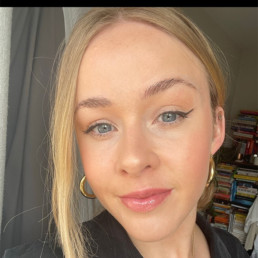
Written by Jessica Tacon
Jessica Tacon is second in charge of the English Department at City of London Academy Highgate Hill and is a member of NATE’s (National Association for the Teaching of English) ‘Reviewing Literature’ working group. She created The Right Writing campaign which aims to improve racial diversity in English Education.
Knee-jerk: “a quick reaction that does not allow you time to consider something carefully”
When a topic or issue becomes present in the public eye (often despite having always been of paramount importance, as is the case with diversity and inclusion in education) or it begins to feel more urgent, there can be pressure to actively resist or even just to react.
The pressure that I am referring to here comes from the expectation that education should be diverse and inclusive, something which has failed to be considered over decades. The pressure point is the realisation of this failing; the need to respond becomes pressurising as organisations need to be seen as doing the ‘right’ thing.
But the bottom line is that schools absolutely must not be exhibiting knee-jerk or quick-fix solutions to improving the diversity and inclusion of education. We need to make it a priority to find that beautiful balance between speed and solutions; remember, the first organisation to make changes in the way of diversity and inclusion is not necessarily the organisation doing the work most properly.
Making time, not taking time
Showing support for a cause without taking action at first can be a good thing. Note I said “can”. Far too many organisations, schools included, have used the excuse of wanting to ‘take their time’ as a guise for the fact that, actually, diversity and inclusion isn’t their priority. To this aim, time must be carved out at a systemic level to plan, implement and maintain changes in the education sector.
What can this look like? In reality there isn’t a one size fits all approach, it can look like many things. For specific questions to help schools to approach changes or to reflect on whether their current approach(es) are purposeful in the ways that truly matter, please see the full version of this article on the Pearson website.
With so many pressures on our time and headspace, tokenism, virtue-signalling and ‘quick’ fixes (which usually fix very little) can be tempting. But when we look at the absolutely unarguable benefits of a truly diverse and inclusive education, we cannot afford to not consider every single aspect of the above questions in everything that we do.
Evaluating English
Let’s look at the subject of English as an example. English A Level uptake has been declining for some time; research is still being done as to why but initial findings show that students do not feel that English is relevant for them or offers them career pathways. In 2018/19, only 19% of students who took English Literature at A Level were Black, Asian or of a Minority Ethnicity (Source: GOV.uk available on request).
Where does this lack of students studying English at A Level come from? In 2018 The Runnymede Trust found that nearly 92% of teachers in state funded schools were White, in 2020 Publishing Perspectives found that only 13% of people working in the publishing industry were Black, Asian or of a Minority Ethnicity and it is not unusual for a pupil to leave school having never studied a book by a Black author, as shown in research carried out by Penguin Random House. It does not take too much evaluation to see the vicious cycle that has been created: everywhere that young people turn they do not see themselves. This forms one example of why all the aforementioned changes need to happen, if it even needed to be pointed out in the first place.
A real reflection
As the writer Junot Díaz puts it:
“You know, vampires have no reflections in a mirror? There’s this idea that monsters don’t have reflections in a mirror…It’s that if you want to make a human being into a monster, deny them, at the cultural level, any reflection of themselves. And growing up, I felt like a monster in some ways. I didn’t see myself reflected at all.”
What Díaz describes here about representation is one facet of these changes; schools must look beyond “representation, and the pitfalls of tokenism, to thinking about how schools can be proactive in tackling racism” as The Runnymede Trust puts it.
Ultimately, what we are offering in educational settings is not truly an education until every aspect of education has changed to represent, include and celebrate every child. We are already behind, now we must come together and push forward diversity. There is no other option.
Take Back the Narrative: Reflections on #DiverseEd Conference

Written by David Church
David is an LGBTQ+ education consultant and former Deputy Head Teacher. He has over 10 years experience in education and is passionate about supporting schools to develop an LGBTQ+ inclusive culture and curriculum. Outside of education, David is a Regional Ambassador for It Gets Better UK.
Attending the #DiverseEd Conference in Bristol on Saturday felt perfectly timed. The backdrop of recent developments from the UK government regarding the trans community weighed heavily on my mind as I prepared for the day ahead. It seemed as if the trans community was under siege from multiple angles: teachers potentially being allowed to discriminate against trans young people in schools (https://www.thepinknews.com/2023/09/23/ehrc-guidance-trans-misgendering-pupils-schools/) and the proposed ban on trans women from women’s wards (https://www.theguardian.com/society/2023/oct/03/trans-hospital-patients-in-england-to-be-banned-from-female–and-male-only-wards).
As a cisgender gay man who had previously faced adversity under the infamous Section 28 (and the legacy since), I felt a deep empathy for the trans community, witnessing their increasing vulnerability and the reported surge in hate crimes against them (https://www.gov.uk/government/statistics/hate-crime-england-and-wales-2022-to-2023/hate-crime-england-and-wales-2022-to-2023).
As an LGBTQ+ education consultant, I was acutely aware that action was needed to ensure the safety of trans+ children, young people, and staff in schools. Fortunately, the conference offered a range of sessions on just this, highlighting the need for greater trans inclusion & diversity.
Every session I attended resonated with me on both a personal and professional level, but my mind was consumed with the urgent need to address the ongoing challenges faced by the trans community.
The first workshop I attended was led by Sarah Bonnell School, focusing on social justice in schools and empowering students to enact change within their communities. Their discussion of “cold anger” as a catalyst for change struck a chord with me (https://www.psychologytoday.com/gb/blog/brave-talk/202109/4-types-anger-everyone-should-know-about). This anger, when harnessed, could drive the transformation needed to combat the prevailing discourse around trans inclusion.
Equally, Shaun Dellenty’s keynote, highlighted the importance of challenging the narrative of fear and division, emphasising that we are stronger together, whether or not we identify as trans. The theme that stuck in my mind: How do we channel this anger and negative energy into positive action?
Similarly, in Bennie Kara’s keynote, the power of stories to reshape narratives was explored. She discussed how we need to move beyond viewing the trans community as victims or dangerous (a perception which has continuously been fed by media and entertainment). The history of LGBTQ+ rights is full of unsung heroes such as Marsha P. Johnson and Sylvia Rivera, who spearheaded the original Stonewall uprising. Yet, their stories are often overlooked in the narrative of our school curricula.
It is imperative that we teach about these individuals to reframe the narrative and challenge prejudices and biases. This will foster a more respectful society, one that goes beyond mere tolerance to genuine acceptance of every individual, regardless of their identity.
Jo Brassington, in their session on trans and non-binary inclusion in schools, passionately reminded us that silence and indifference regarding trans+ inclusion make us complicit. It reminded me of the words of David Morrison, Chief of Army in the Australian Army, which echo this sentiment: “The standard you walk past is the standard you accept.”
This is not about understanding what it means to be trans but about having compassion and acceptance for every trans person; knowing them as individuals and hearing their story. Stories have been central to human culture since time began, and it is now time to reshape these stories in the public eye. As agents of change, we must stand with the trans community, working towards a compassionate view that acknowledges them as individuals.
The #DiverseEd Conference offered a glimpse into the power of collective action, empathy, and storytelling to take back the narrative, ensuring that the voices and experiences of the trans community are heard, respected, and valued. We, as educators, have a unique opportunity to lead this transformation, shaping a more inclusive and compassionate society by ensuring our curriculum fosters a positive narrative of a range of trans people; from the books we read, to the significant role models we explore and the policies we have in place. Taking back the narrative is not just a goal; it’s a collective responsibility that we must all be conscious about in our schools.
Supporting Parental Engagement for EAL Students
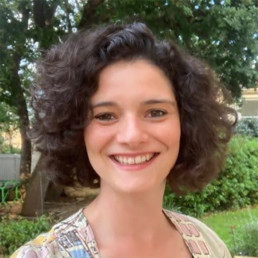
Written by Emma Sheppard
Emma founded The MTPT Project, the UK's charity for parent teachers, in 2016 when on maternity leave with her first child. She has 12 years experience as an English teacher, Lead Practitioner and ITT Lead, and now runs The MTPT Project full time.
I’m now into my third year of immigrant living, having relocated to France with my family in 2021, and – amongst all the other rather enormous changes – one of the most insightful experiences has been navigating the French education system with two children now in infant and primary school.
For context, our move to France marked the first time in twelve years that I hadn’t started September as a teacher. As a consequence, it was also the first time as a mother that I had been responsible for all the school runs, dropping my children off at their class, rather than breakfast club or handing over from an after school nanny. My children are bilingual, thanks to my French husband, and my French is competent, but – oh my! – have I felt the panicked feeling of perpetual confusion, catch up and miscommunication over the last two years!
Of course, having previously worked in schools with a high percentage of EAL, bilingual and multi-lingual students, and even managed our EAL department, it has been fascinating to be on the “other side”. But this insight has pertained, not to my children’s experience (indeed, my daughter is arguably more comfortable in French than in English), but to how we can support the parents in our communities who may not be fluent English.
Here’s what’s been really helpful for me, as the “F(French)AL” parent at the school gate…
Information Evenings
A short information evening early on in the term where parents get the chance to see their children’s classroom, leaf through their books, visually take in which book is the planner, which is for reading, what homework might look like etc., is a great starting point. It provides the opportunity for parents to demonstrate their level of English, and for teachers to take note of any families that might need additional support in clarity of communication. It also introduces parents to each other so that families speaking the same language can find each other and build community, or get added to the class WhatsApp group so they don’t miss out on important reminders or get togethers.
I make a point of speaking up at these meetings, and talking to the teacher afterwards so that they can really hear the extent of my clumsiness in French, but some parents might not feel comfortable doing this. Quietly engaging with parents as they come in, or leave the meeting with more than a “hello”, “good bye” can be a good way for teachers to get a better idea of how much English our families have.
Asking all parents in these meetings, their preferred means of communication – email, telephone, in-person, notes in planners – is a sensible way to secure clarity of communication from the start. Some parents may be able to speak and understand English confidently, but their literacy skills may be weaker. Some parents may be adept at using Google translate and balk at telephone conversations. Equally, for our native or fluent English speakers, email may be far preferable in a busy working day, to the interruption of a telephone call.
At the School Gate
The relaxed, conversational moments at the school gate are a great opportunity to show with smiles and gestures that students have had a great day, or to point out an important piece of information in a letter going home, or even to tackle challenges. This might be normal practice at primary level, but is particularly helpful for parents without much English who may otherwise have no means of knowing how school is going.
The hovering time afforded to me by the physical presence of teaching and support staff at the gate of my children’s first school meant that I was able to get to grips with how school lunches worked, wraparound care, strike days, when to bring in packed lunches, what on earth the system of cover teachers was in France. Remember that different countries have hugely different approaches to all aspects of education, and ways of doing things outside the classroom might be completely alien to some of our families – they were to me!
At secondary level, it might be trickier, especially beyond KS3 where students are more independent, but knowing which parents do collect their students, and swapping in a gate duty once in a while is a great opportunity for relationship building.
Inclusive Homework
Never have I had such thorough French lessons as when my son started CP, the equivalent of Year 2 when children learn to read in France. Every evening, he was required to read through syllables and increasingly complex passages from his Taoki text book. My pronunciation, vocabulary and understanding of French linguistics improved immeasurably over this year, even if I still can’t differentiate between the different ‘oo’ sounds. I now have two miniature teachers, as well as the shadow of their teachers to support my progress in French.
Homework activities – and resourcing these effectively – that allow parents to learn alongside their children, even if they are doing this surreptitiously rather than pro-actively, are a great way to boost parents’ own language skills.
Celebrate Home Languages
Yes, yes, I’m an English teacher and will leap at any chance to read a story and perform in front of an audience, but the jokes from parents and teachers about helping them to improve their English have resulted in a termly story-time slot for three year groups in my children’s current school.
As English speakers, we’re in the privileged position of speaking the global language of business, and as such, English is a valued language in most countries. Unfortunately though, this means that we look down – as a general culture – on other languages or consider them irrelevant.
This contempt is interlaced with prejudice, and I’ve definitely been on the receiving end of light-hearted mockery or messaging coming through my children and their friends, that indicates that these attitudes are also present in France. It creates tension, wariness and defensiveness and I’m incredibly conscious of the parents and teachers who make room for me, and are generous with my language – allowing me to make mistakes and feeding me vocabulary when I stumble – and those who look at me with fear or discomfort when I begin talking.
Story time has provided an opportunity to celebrate English – I deliver with props and songs and emphasis, and follow-up worksheets – and the children love it and share this enthusiasm with their families. Not all parents will be interested or available for a set up like this, but events like World Book Day, a Home Cultures or International Day, are great opportunities to invite primary school parents to come in and tell a story in their home language. At secondary level, this could take the form of a drop down day or afternoon where parents, students and teachers set up a national market place stall of treats, games and language challenges for students to explore.
Offering community languages as an optional GCSE is also a hugely important signal that other languages are valued in your school. Parents need to be informed of how their can support their children with this extra-curricular commitment, and the importance of speaking, reading and writing the home language. Some parents might even be interested in supporting with language clubs, additional tuition, mock paper marking, or speaking exams.
Most importantly, remember that language limitations don’t make parents lesser, and it is definitely not our role as teachers to dictate how much English our students’ parents should speak, or the languages that should be spoken at home. Bilingualism and multilingualism are a gift, and “Time and Place” bilingualism – where specific locations (e.g. home and school) – are delineated for one or other language is a tried and proven method for building native fluency in more than one language.
Parents’ English may improve over time, or they may be very content with the level of language they have. This may be particularly true if they have secondary aged children and school is the only reason they need to understand or use their English. With small adjustments – many of which are attitudinal – we can embrace the parents of our EAL students and facilitate inclusive environments where they can engage with their children’s education in a way that feels appropriate to them.

